What you'll learn:
☞ Intro
In this book, “The Muscle and Strength Pyramid: Training” by Eric Helms, Andy Morgan, and Andrea Valdez, the authors emphasize two critical components of successful training programming.
Prioritizing what is most important. And understanding how to adjust training variables while maintaining their order.
1. Prioritizing That Which Is Most Important:
- Establishing a clear order of importance for training factors, based on decades of experience and research, helps prevent confusion.
- When faced with conflicting advice on exercises, intensity, sets, or training methods, consider their importance relative to your goals.
- Think of these variables as a pyramid of importance, where the most crucial elements are like big rocks that must be in place before smaller details are considered.
2. Learning How to Adjust Each Training Variable:
- Critical thinking is key to success in adjusting training variables effectively.
- Avoid black-and-white thinking and consider the context for each variable.
- Examples of critical thinking questions include examining unique aspects and limitations of exercises and assessing how changes in sets, volume, and intensity affect progress.
Introducing the Pyramid:
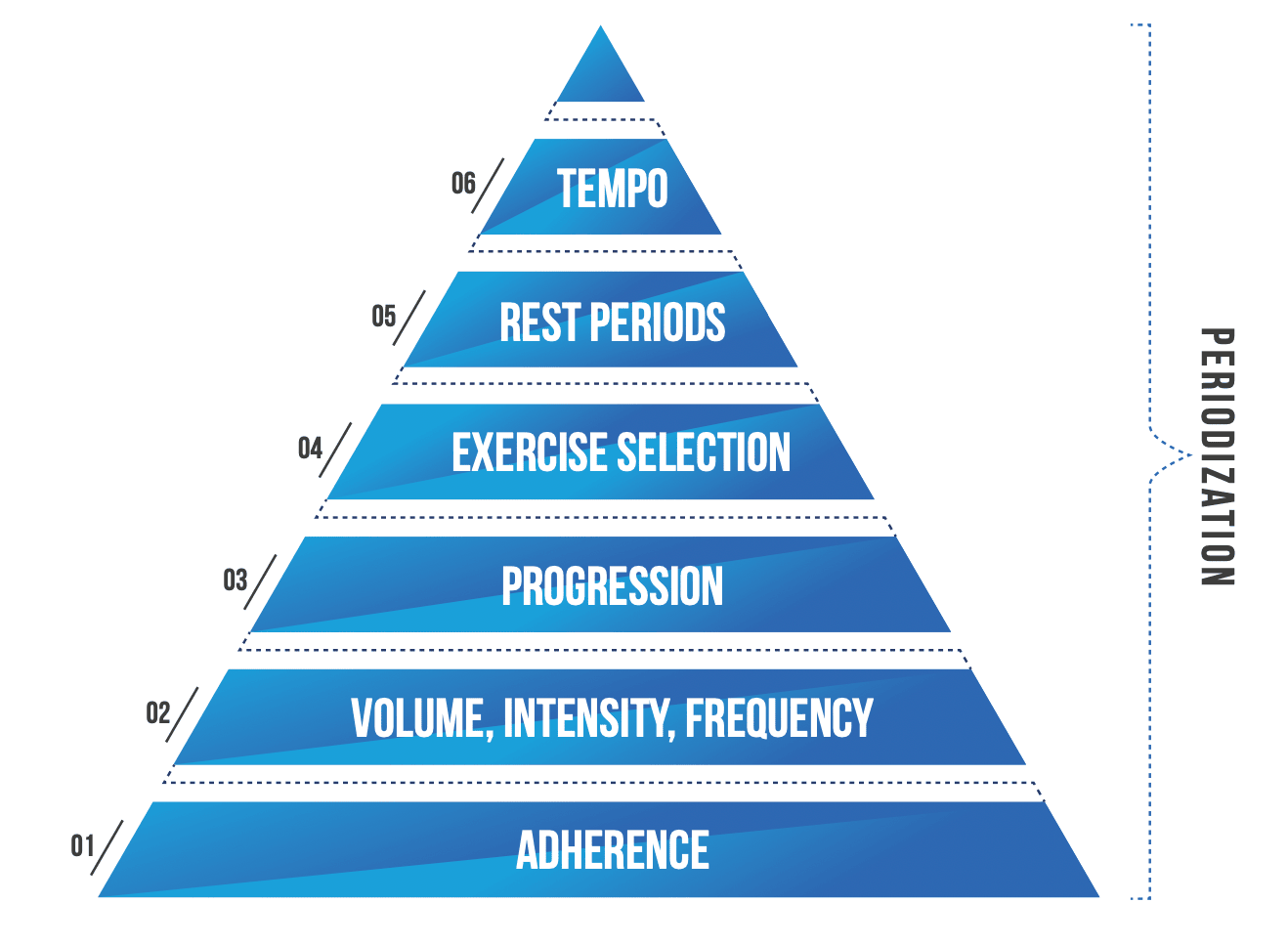
- The Training Pyramid organizes training priorities in a hierarchy, with the most important elements forming the foundation.
- Approximately 80% of progress depends on focusing on the lower levels, while the upper levels provide finishing touches.
- The six levels of the pyramid, in order of priority, are: Adherence, Volume, Intensity, Frequency, Progression, Exercise Selection, Rest Periods, and Lifting Tempo.
The Muscle and Strength Pyramid Training summary will delve into these levels to help you create effective training plans.
Emphasizing the importance of adherence, the interplay between volume, intensity, and frequency, the principle of progressive overload, exercise selection, rest periods, and lifting tempo.
➡️ Read More: Health Equals Wealth (Not the Other Way Around)
Each level contributes to optimizing your training progress and understanding how to achieve your fitness goals effectively.
☞ Level 1: Adherence
Adherence is fundamental to the success of any training program. No matter how well-structured a program is, it’s worthless if you can’t stick to it. This level emphasizes the three important conditions for training adherence:
- Realistic: Your training schedule must be sustainable and practical. Consider your time frame, whether you’re preparing for a specific event or simply aiming for long-term progress. Align your training plan with the time you have available, and avoid unrealistic expectations.
- Enjoyable: It’s essential to find enjoyment in your training. When you love your program, you’ll put more effort into it. Tailor your training to suit your preferences and create a positive cycle where progress enhances your enjoyment and motivates you to train harder.
- Flexible: Flexibility is vital to accommodate unexpected challenges. Life is full of stressors, both within and outside your control. Being flexible allows you to adapt to changes without giving up or blindly altering your program. Learn how to adjust your training while keeping your long-term goals in mind.
Fitness Activities Outside of Lifting:
- Many lifters also engage in other physical activities such as hiking, group exercise, recreational sports, or martial arts.
- While it may be argued that avoiding outside activities is optimal for strength or hypertrophy, it’s important to consider your overall well-being.
- Activities like being outdoors, building connections, and being part of a community have positive effects on your physical and mental health.
- For those involved in both lifting and another physically demanding activity, one must take priority, and the focus should be on enhancing sport performance rather than optimizing lifting.
- Balancing lifting with other activities requires planning and awareness of potential interference effects.
Injury:
- Serious resistance training can lead to injuries, but the risk is relatively low compared to many mainstream sports.
- Injuries are almost inevitable if you take lifting seriously, but the benefits of lifting outweigh the risks.
- When dealing with injuries, seek a qualified physical therapist or sports injury doctor, especially one with experience working with athletes.
- Minor aches, pains, strains, and stiffness are common for serious lifters. Don’t ignore them, but also don’t let fear lead to irrational decisions.
- Modify your training to accommodate injuries, alter the range of motion, reduce load, or replace movements to avoid pain.
- Blood flow restriction (BFR) can be used to reduce load while still stimulating hypertrophy in some movements.
- If an injury persists or can’t be worked around, seek professional help.
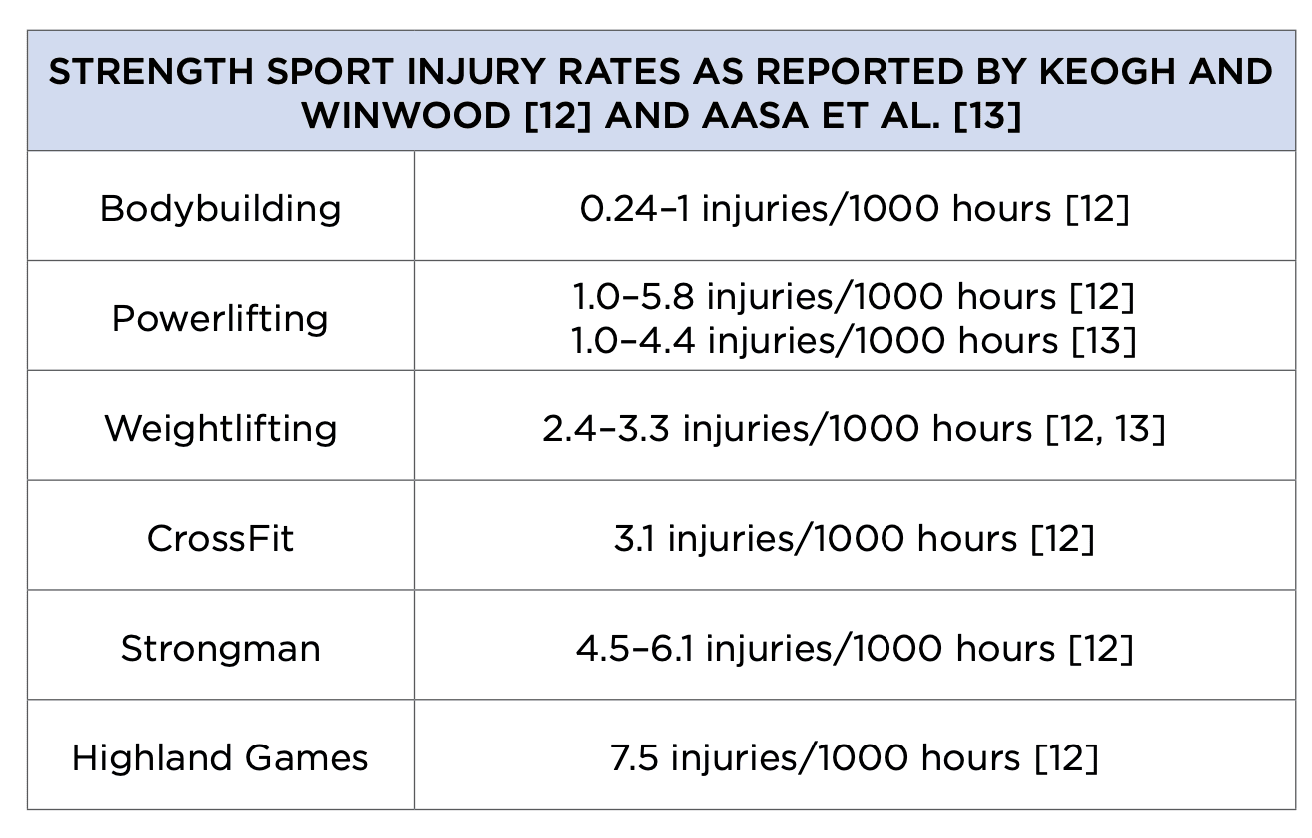
In summary, adherence requires self-awareness and restraint. Your training program should be tailored to your life circumstances, enjoyable enough to maintain, and flexible enough to handle curveballs that life throws at you. Embrace the REF philosophy: Realistic, Enjoyable, and Flexible.
➡️ Read More: 33 Best Bruce Lee Quotes (Who Was Bruce Lee?)
☞ Level 2: Volume, Intensity, Frequency
Volume:
- The recommended volume is provided as 10–20 sets per muscle group/movement per week.
- The example routines illustrate how to distribute volume across different exercises and muscle groups to achieve balance and effectiveness.
- The importance of overlap in training exercises is discussed, highlighting that volume should be adjusted considering exercise overlap.

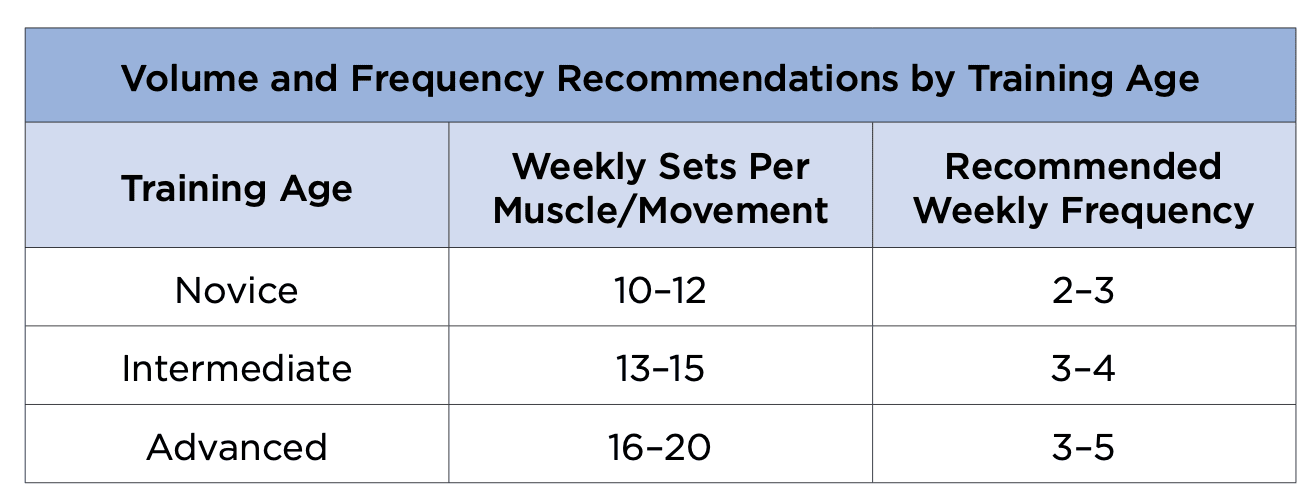
Intensity:
- The concept of intensity is explained in relation to the rep ranges used (1–15 reps) and the Rate of Perceived Exertion (RPE) range (5–10).
- Different rep ranges for hypertrophy and strength goals are provided.
- The example strength routine focuses on lower rep ranges (1–6 reps) to build strength, while the hypertrophy routine emphasizes a wider range (6–12 reps) for muscle growth.

Frequency:
- The recommended training frequency is to train each muscle group or movement pattern at least twice weekly.
- The example routines demonstrate how to structure training sessions throughout the week to meet this frequency.
- The importance of managing overlap and fatigue when determining training frequency is discussed, emphasizing the need to adjust frequency based on individual needs.

☞ Level 3: Progression
Progressive Overload:
- This means gradually increasing the weight, reps, or intensity of your exercises to continually challenge your body and promote growth.
- It’s the cornerstone of any effective training program because it forces your body to adapt and get stronger.
Periodization:
- Periodization is a structured approach to training that divides your workout plan into distinct phases or cycles, each with specific goals and training focuses.
- It helps prevent plateaus, reduces the risk of overtraining, and optimizes progress by strategically changing training variables.
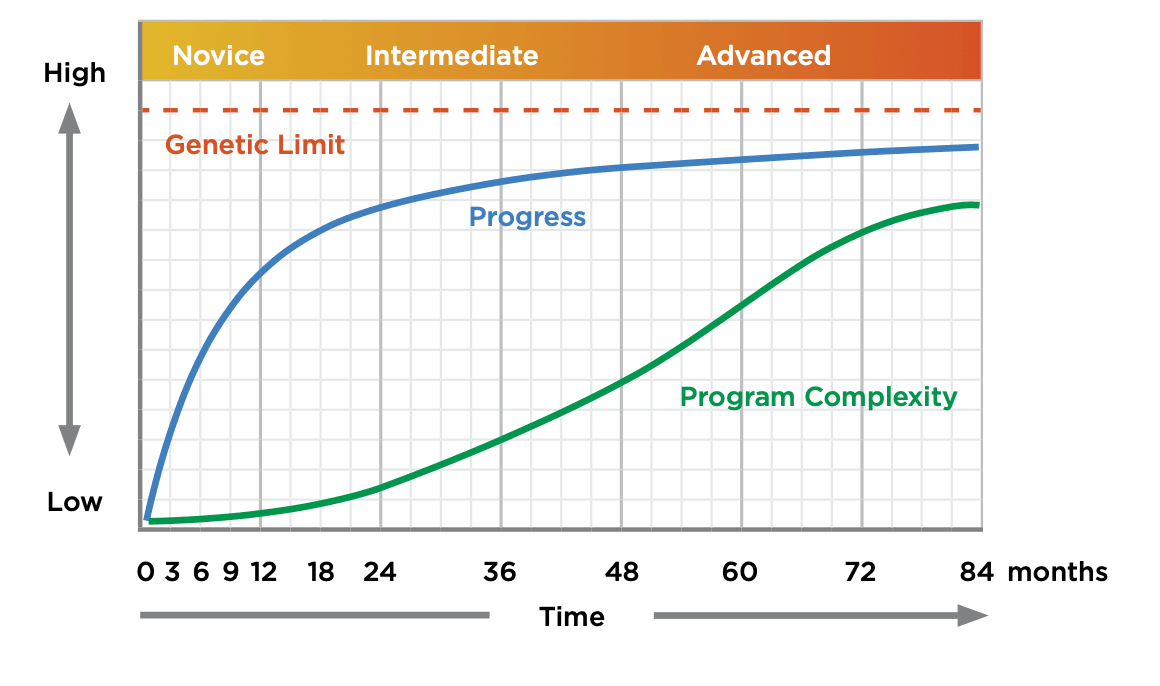
Linear Periodization:
- It involves gradually increasing the weight you lift while decreasing the number of reps over a training cycle, typically in 4-week blocks.
- It’s effective for building a strong foundation and progressively increasing intensity.
Block Periodization:
- This approach divides your training into blocks, such as accumulation, intensification, and realization, each with a specific focus.
- It allows for targeted development of different aspects of fitness and peaking for competitions.
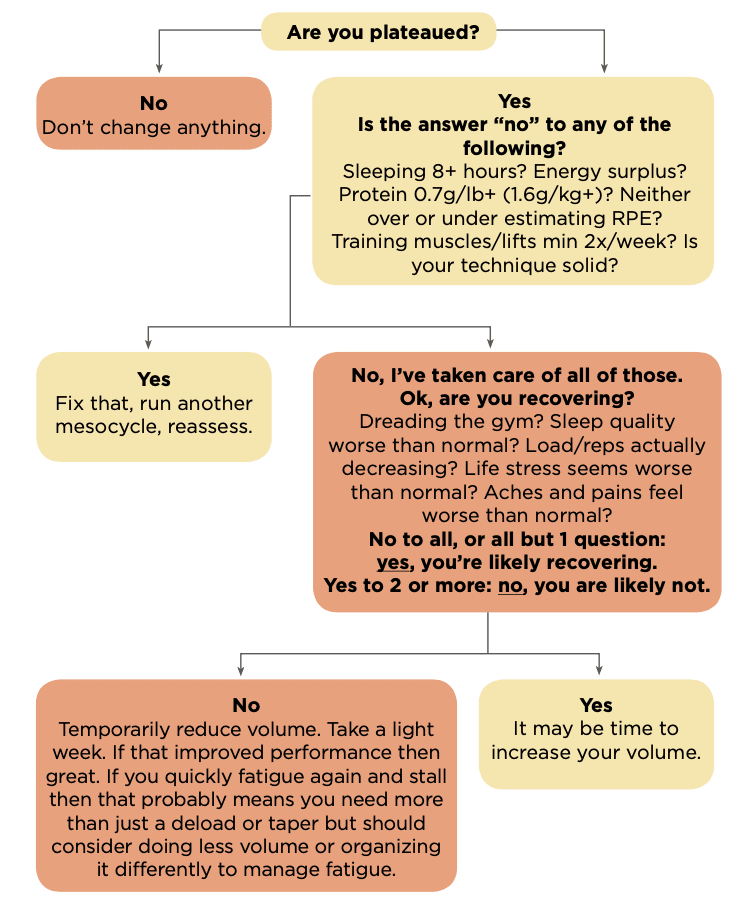
Daily Undulating Periodization (DUP):
- DUP involves changing training variables within a week, such as intensity and volume, to provide variety and continual adaptation.
- It keeps workouts interesting and aligns with individual goals and preferences.
Tapering for Peak Performance:
- Tapering involves reducing training volume to allow fatigue to dissipate and peak in performance on competition day.
- It’s crucial for strength athletes like powerlifters to perform at their best when it matters most.
Attempt Selection Strategy:
- It’s the process of choosing weights for competition lifts strategically, prioritizing building a total rather than personal bests.
- This conservative approach leads to consistent progress and competitive success.
Peaking for Bodybuilders:
- Bodybuilders adjust training in the final week before a competition to optimize appearance, focusing on carbohydrate loading.
- It’s essential to look your best on stage and showcase your hard-earned physique.
Customized Progression:
- Different approaches are suitable for beginners, intermediates, and advanced trainees.
- Tailoring your training plan ensures it aligns with your current fitness level and goals.
➡️ Read More: Death: One Hell of a Wake-Up Call
☞ Level 4: Exercise Selection
Specificity:
- For powerlifters, the core of the program should revolve around the competition lifts (squat, bench press, deadlift).
- For bodybuilders, while compound barbell exercises are important, a mix of compound and isolation exercises is ideal to ensure proportional muscular development without neglecting any muscle groups.

Efficiency:
- Compound movements should be a primary focus as they provide uniform muscular development in a time-efficient manner.
- Isolation exercises can be included as needed to address weak points and ensure balanced muscle development.
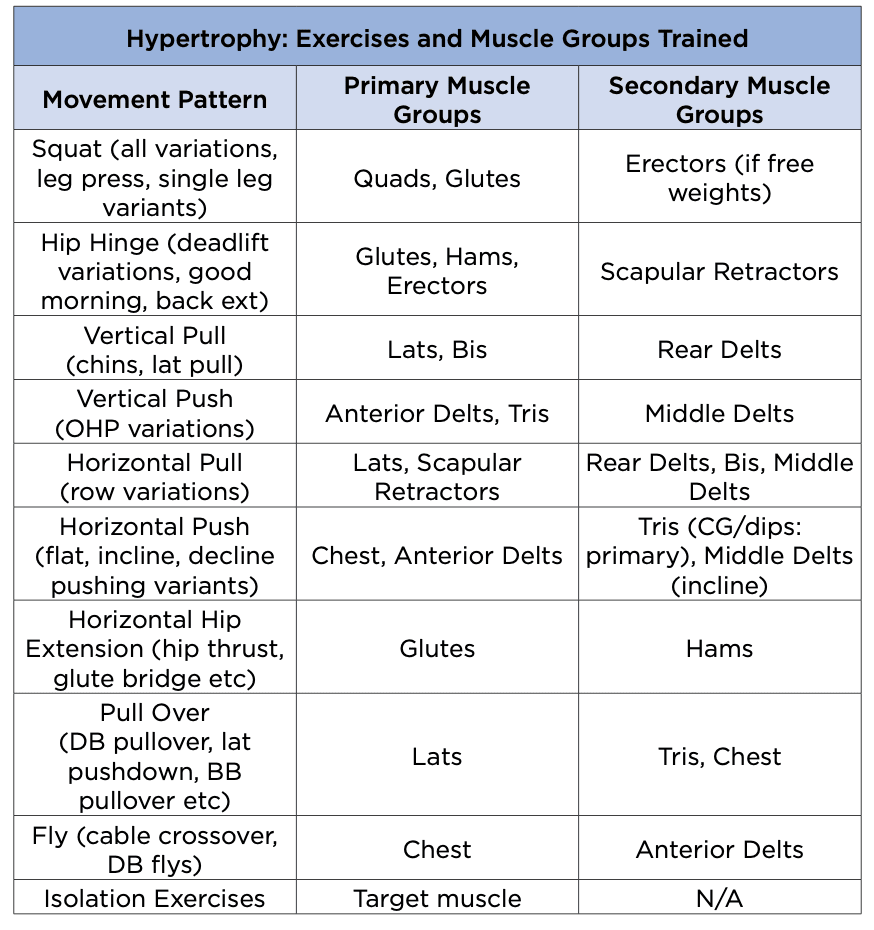
Weak Points:
- Weak points can arise due to structural factors, and bodybuilders may need to focus on specific muscle groups to address them.
- Biomechanical issues like limb lengths can affect exercise suitability, particularly in bodybuilding. Strength athletes should still master competition lifts but may require additional assistance exercises tailored to their biomechanics.
Proper Form:
- Proper form is essential to effectively engage target muscle groups in a balanced manner.
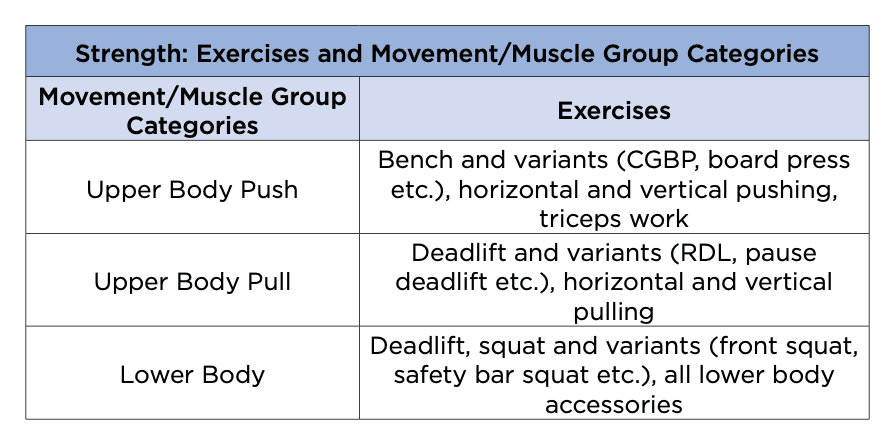
Exercise Order:
- Compound barbell exercises should generally be performed first in a training session when you are fresh to optimize performance.
- In cases where a specific muscle group needs extra attention and fatigue won’t hinder compound lift performance, it can be trained first.
☞ Level 5: Rest Periods
Hormone Hypothesis Debunked:
- The idea that shorter rest intervals enhance hypertrophy by manipulating post-exercise hormone response has been largely debunked by research.
- Hormone responses are likely correlated with muscle growth rather than causative.
Metabolic Fatigue:
- While metabolic fatigue can contribute to hypertrophy, excessively short rest intervals may sacrifice total volume for metabolic fatigue.
- It’s essential to strike a balance to ensure both volume and intensity are maintained.
Muscle Damage:
- Muscle damage is a part of resistance training but doesn’t need to be sought out deliberately.
- Excessive muscle damage can interfere with hypertrophy progress.
Antagonist Paired Sets (APS):
- APS, or supersetting opposing muscle groups, can be an effective time-saving strategy without compromising performance, particularly for isolation exercises.
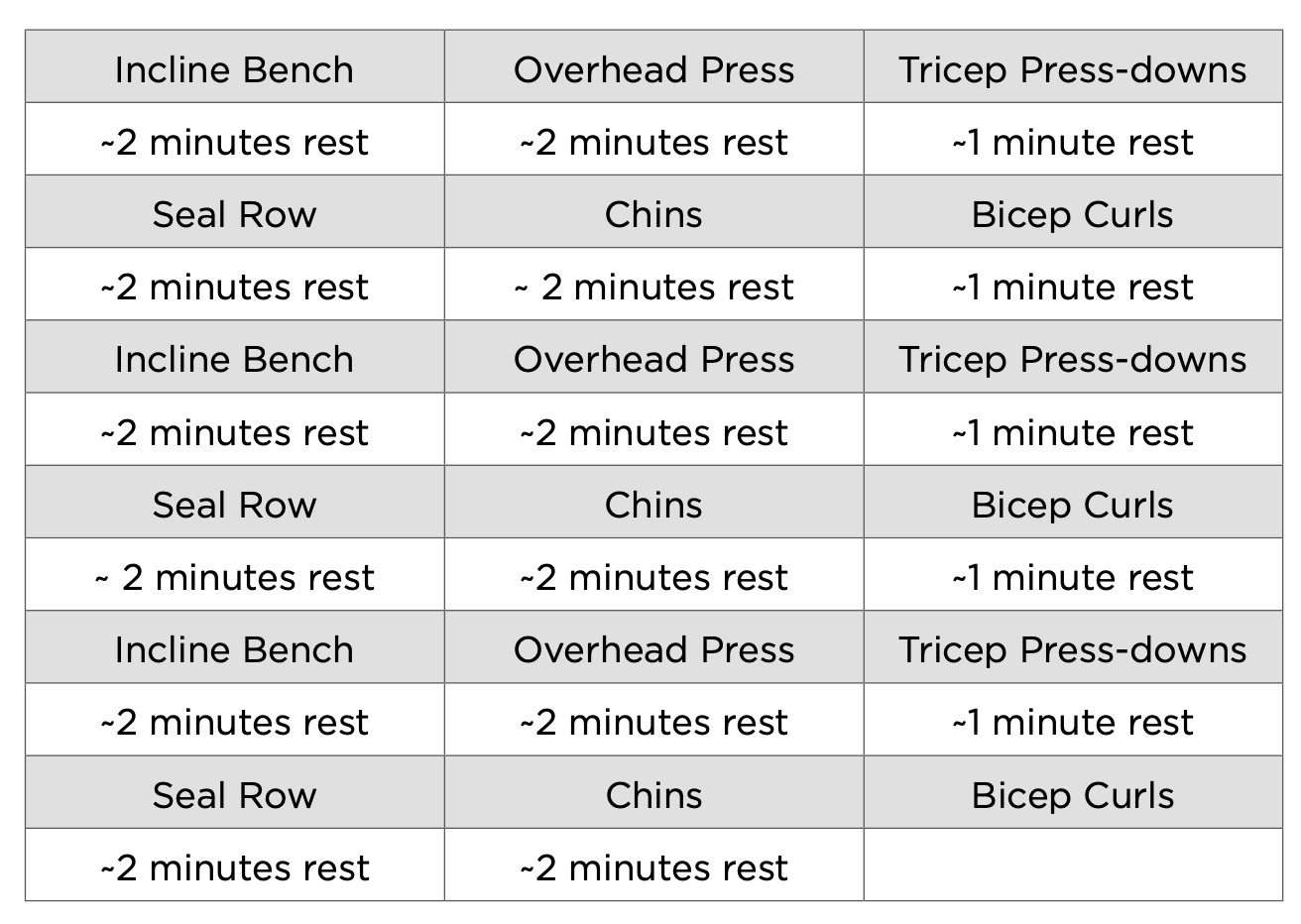
Full-Body Exercises:
- For exercises like squats, deadlifts, and their variants, it’s advisable to rest without doing anything else between sets due to the extensive involvement of multiple muscle groups.
Powerlifting Bench Press:
- Even for the bench press, which can involve leg drive in powerlifting, APS should be used cautiously.
Programming with APS:
- When using APS, pair push-pull exercises and ensure adequate rest between sets, especially for compound movements.
Drop Sets and Rest-Pause Sets:
- These intensity techniques can be effective for saving time and promoting muscle recruitment.
- However, they may lead to tracking and fatigue issues, so use them primarily for accessory work.
Balancing Fatigue:
- Avoid training to failure on compound lifts as it can lead to excessive fatigue and negatively impact subsequent workouts.
- Reserve it for accessory exercises.
Rest Period Recommendations:
- Rest until you feel ready to perform at your best on the next set. If needed, clock your rest periods to ensure at least 1.5 minutes between smaller muscle groups and 2.5 minutes between compound lifts.
- APS, drop sets, and rest-pause sets each have their place but should be applied thoughtfully to avoid fatigue-related issues.
☞ Level 6: Lifting Tempo
Importance of Eccentric Actions:
- Eccentric muscle actions, which refer to the lowering portion of lifts, are critical for both strength and hypertrophy.
- Eccentric actions allow you to control the load and generate force as the muscle lengthens, making you stronger eccentrically than concentrically.
Time Under Tension Alone Is Not Enough:
- While time under tension is important, it’s not the sole factor to consider.
- The magnitude of tension (force) you produce during lifting is equally crucial for muscle growth and strength development.
Impulse:
- Impulse, which is force multiplied by time, represents the combination of the time spent under tension and the magnitude of tension.
- This concept helps us understand that simply extending the time without considering force may not yield optimal results.
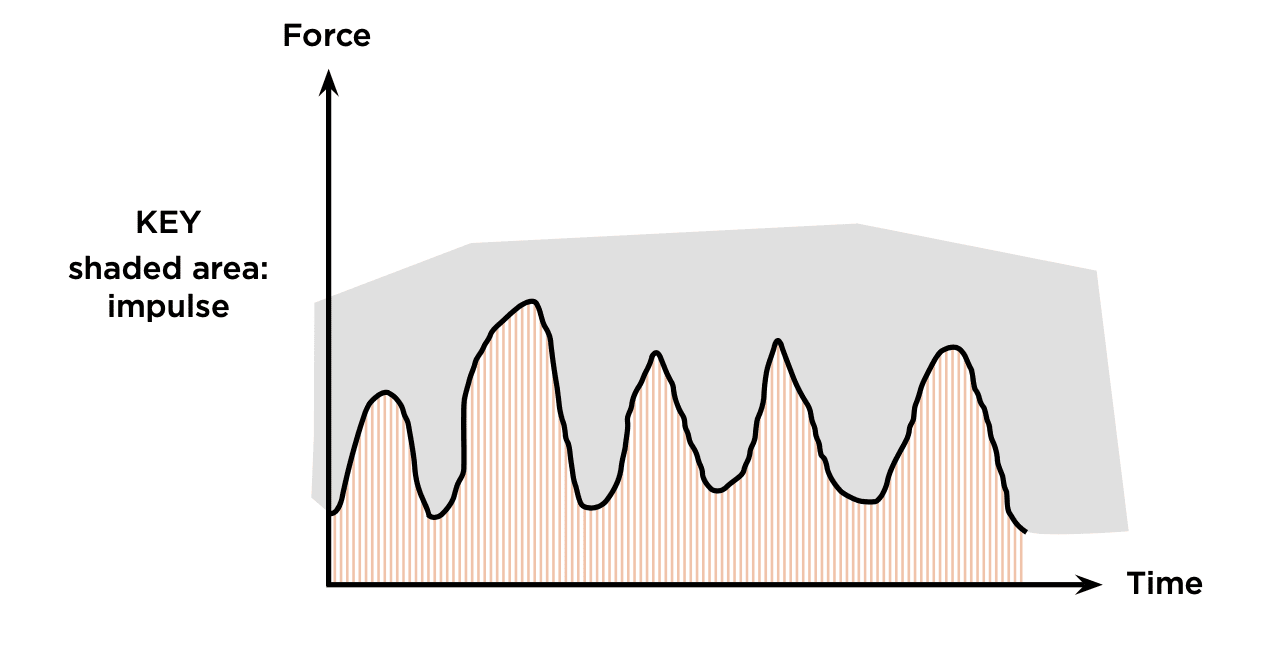
Study Insights:
- Studies comparing different lifting tempos have shown that sacrificing load to spend more time lifting can hamper the total tension stimulus to the muscle.
- Slower tempos can compromise volume and load, which are essential for hypertrophy.
Supramaximal Eccentric Training:
- Manipulating load to make the eccentric phase heavier has been explored but hasn’t shown significant benefits for hypertrophy or strength in current research.
Practical Guidelines:
- For hypertrophy and strength training, focus on controlling the eccentric phase, ensuring it’s a muscle action, not just letting gravity do the work.
- The concentric phase should be performed forcefully, with proper form and control, but not excessively slow.
- Remember that control is essential for setting up a strong concentric contraction and optimizing performance.



